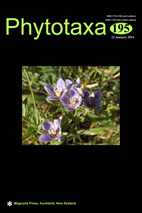Abstract
Two new apomictic species of bramble occurring in Hungary and adjacent regions, Rubus gayeri and R. slavonicus, section Rubus, subsection Hiemales E. H. L. Krause, series Micantes Sudre, are described. Diagnostic features, pen drawings and photographs of both new species are presented; moreover, distribution maps, list of revised specimens and habitat characteristics are included as well. R. gayeri is a regional bramble species occurring on the eastern foothills of the Alps (W Hungary, SE Austria and N Slovenia); its range is of approximately 120 km diameter. Originally, it was connected with acidophilous oak-hornbeam and beech forests and forest fringes, expanding later (due to anthropogenic influences) to secondary coniferous woods of base-poor soils. R. slavonicus has a specific long-drawn range from the northwestern Balkans (Bosnia & Herzegovina) to the centre of the Pannonian Basin (Hungary) of approximately 250 km diameter. Throughout its range it typically occurs in pedunculate oak-hornbeam forests of lower altitudes with several sub-Mediterranean elements. In the northernmost isolated part of the range (N of Lake Balaton) it is found in extrazonal beech forests on basalt bedrock.

